
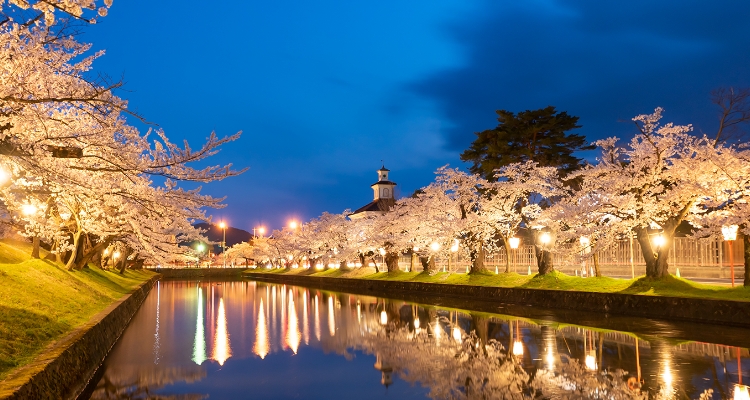
 About Tsuruoka
About Tsuruoka
Welcome to Japan’s first designated UNESCO Creative City of Gastronomy!
Tsuruoka City is located in the western part of Yamagata Prefecture alongside the Sea of Japan in the Northeastern region of Japan called “Tohoku.” In 2014, it became designated as the first UNESCO ‘Creative City of Gastronomy’ in Japan. Three "Japan Heritages” are featured here: Dewa Sanzan's Journey of Rebirth, the Samurai Silk, and the Kitamae-bune Maritime Road.
Other unique attractions that make Tsuruoka a valuable destination include 1400 year old sacred mountains: Mt. Haguro, Mt. Gassan, and Mt. Haguro; beautiful forests; the Kamo Aquarium, which boasts the biggest jellyfish display in the world; and a unique culinary culture.

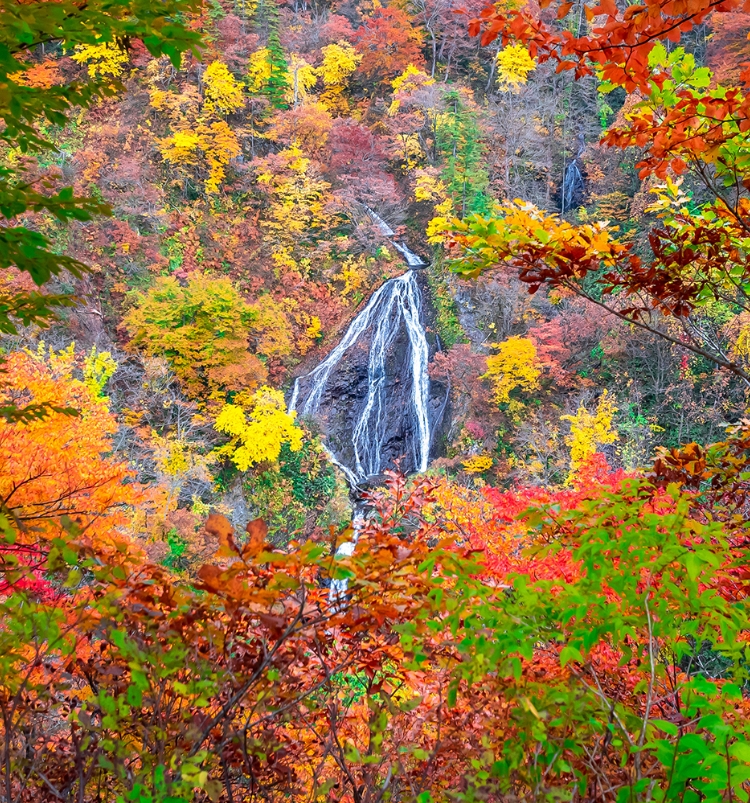
Nature & Seasons
The Tohoku region (North-Eastern Japan) is the dream destination for hiking lovers. The calm, the untouched nature, the mountains, the ancient shrines scattered across the forests... There are so many wonders waiting for adventurers in Yamagata Prefecture.
Not to be outdone, Tsuruoka City has many trekking trails with several difficulty levels that will satisfy any hiker. During your journey in Tsuruoka, you will discover: natural monuments such as Grandpa Cedar (Mt. Haguro) or Mt. Haguro’s Cedar Tree Line; monuments of scenic beauty such as Mt. Kinbo or Gyokusenji Temple’s zen gardens, national treasures such as Mt. Haguro’s Five-Storied Pagoda, and many more valuable sights scattered along the paths you have chosen to walk. Have a look at the outdoor attractions in Tsuruoka:

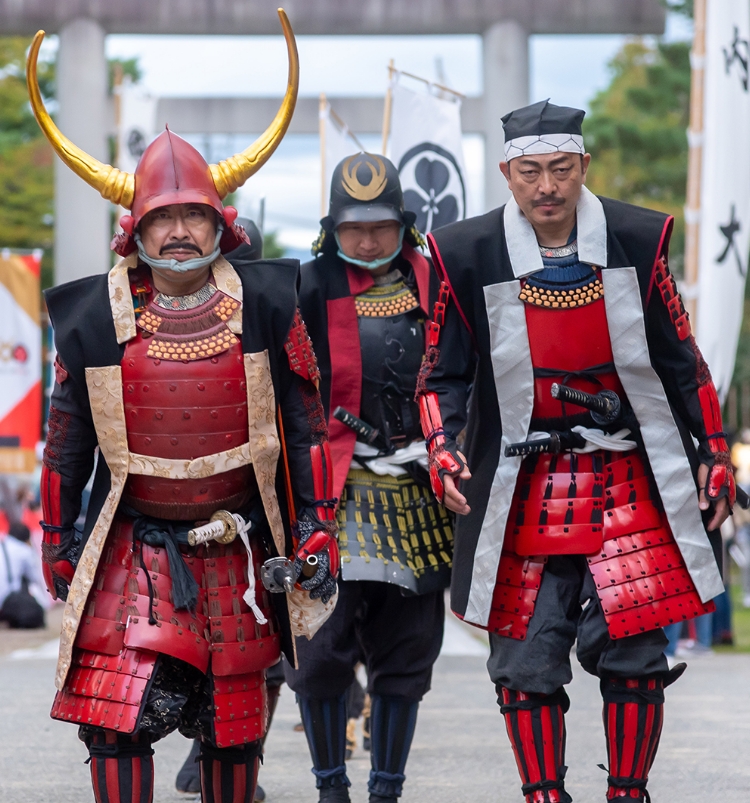
Downtown Tsuruoka’s Feudal Past - The story of the Shonai Clan
During the Edo period (1604-1868), the Shonai Clan was established in Tsuruoka City under the leadership of the Sakai Family, who continue to reside in Tsuruoka to this day. The Shonai Clan gained renown for its exceptional military prowess, boasting a flawless record in battle. Notably, Shonai was the last domain to capitulate during the Boshin War of 1868, a conflict that pitted the shogunate against the Imperial government.
The military preeminence of the Shonai Clan can be attributed to the high educational standards upheld by its leadership. The Sakai family established the "Chido Clan School," known as Chidokan, with the purpose of instructing young men in the tenets of Sorai's Neo-Confucianism. This doctrine emphasizes discipline, dedication to hierarchy, and self-improvement.
Tsuruoka City has preserved the ambiance of a feudal castle town within its urban confines.
Additionally, the "Matsugaoka Reclamation Site" serves as a testament to the Shonai Clan's greatness and holds the distinction of being a nationally recognized historical site. Following their surrender in the Boshin War, the former domain samurai secured government authorization to undertake the reclamation of mountain forests and transition their focus to silk production. Tsuruoka remains the sole location in Japan where the entire silk production process, from silkworm breeding to weaving, is
meticulously preserved. In 2017, it was bestowed the title of a Japan Heritage site, under the appellation "Samurai Silk."

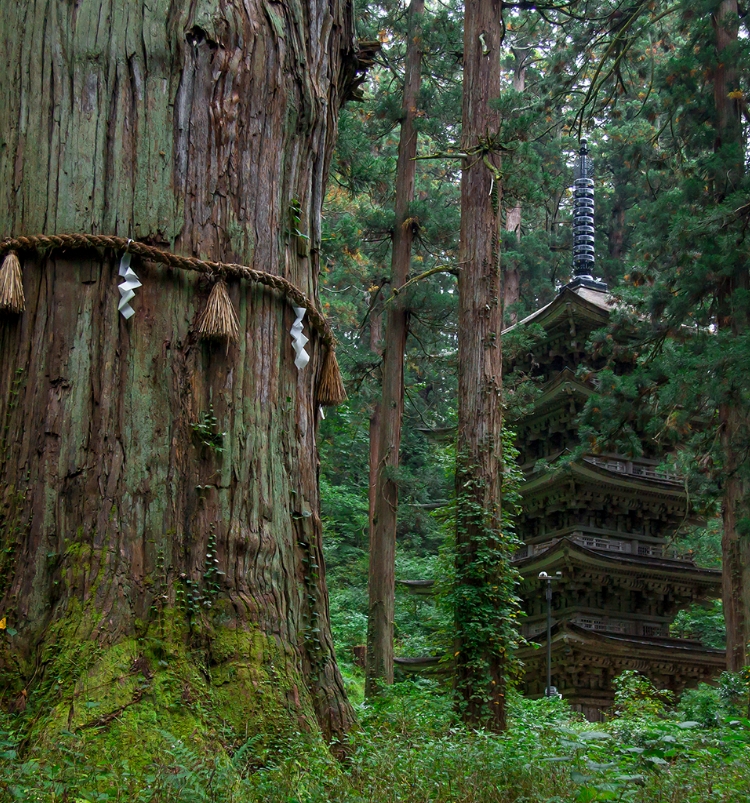
Dewa Sanzan - A Japan Heritage
Dewa Sanzan 出羽三山 is the collective name given to the "Three Sacred Mountains of Dewa" — Mt. Haguro, Mt. Gassan, and Mt. Yudono. It has been a pilgrimage site for religious practitioners of ‘Shugendo’ for more than 1400 years. Shugendo 修験道 (in Japanese: "the Way of the Harsh Training”) is derived from Esoteric Buddhism practices; it includes principles from both the Shinto religion and Taoism and is strongly linked to Japan's original spirituality that centers on the worship of mountains. The practitioners of Shugendo are called Yamabushi 山伏 ("those who retreat in the mountains").
The Dewa Sanzan is one of the Three Main Sites of Shugendo in Japan (日本三大修験道), designated sacred in 593 by the legendary Prince Hachiko. In addition to being central for mountain-worshipping religious practices in the Tohoku region, the religious tensions between Mt. Yudono and Mt. Haguro led to the emergence of the Sokushinbutsu mummies phenomenon in the Shingon Buddhist temples of Mt. Yudono. Sokushinbutsu are mummies of Shingon Buddhist monks who committed to harsh practices in order to mummify their own bodies. This was done in an effort to become Buddhas themselves.The separation between Shinto and Buddhism—ordered by the Meiji Government in 1868—led to multiple transformations within Dewa Sanzan's Shugendo practice and its architecture.
Despite those transformations, Dewa Sanzan's practice of Shugendo has been continuous for the past 1400 years. Even today, you can attend Yamabushi rites performed by Yamabushi priests, and even interact with them.

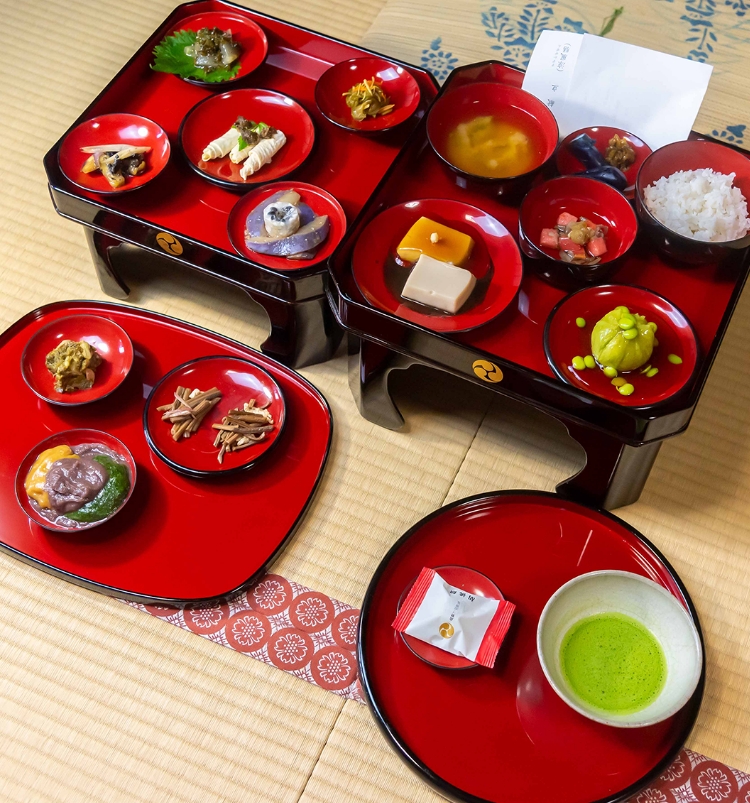
Japan’s First “UNESCO Creative City of Gastronomy”
The food culture in Tsuruoka City, nurtured by its abundant natural surroundings, has been treasured and passed down through the ages. In December 2014, it achieved a significant milestone as the first city in Japan to earn the title of "UNESCO Creative City of Gastronomy." Over generations, the people of this region, particularly the farmers, have safeguarded and passed on more than 60 varieties of "indigenous crops." These crops, along with the methods of their cultivation, are considered as "living cultural treasures" and continue to enchant visitors. Additionally, Tsuruoka is renowned for its distinctive food culture, including "Shojin Ryori" inspired by the Dewa Sanzan mountains, showcasing a profound reverence for spiritual and cultural values

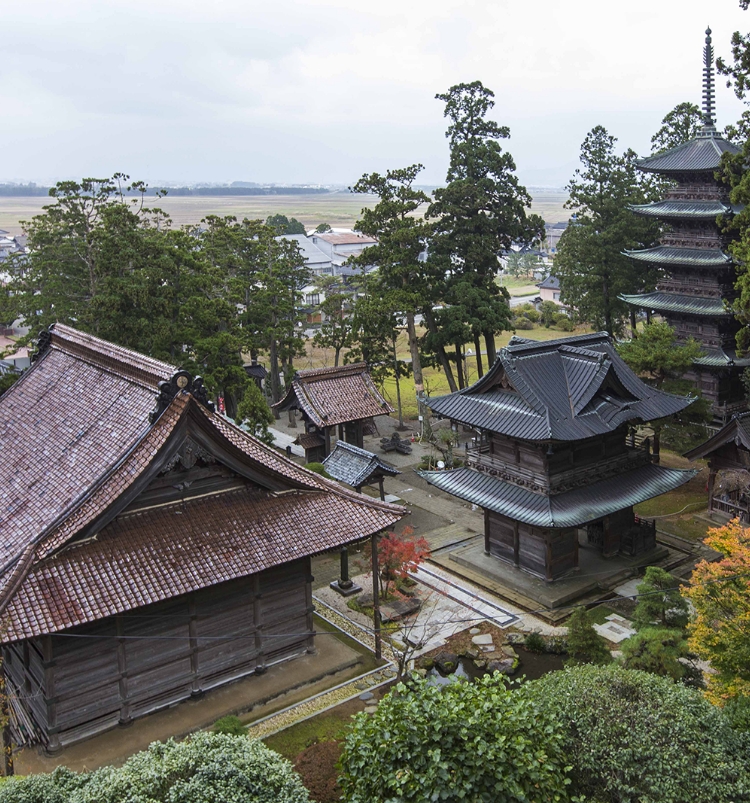
Tsuruoka’s shrines and temples
This city is graced with an array of shrines and temples that not only serve as religious sanctuaries but also as timeless relics of Japan's rich cultural heritage. On top of hosting the Dewa Sanzan’s sacred sites, Tsuruoka is also home to Zenpoji Temple, a Zen Buddhist temple known for being one of Japan’s “3 Main Soto School Buddhist temples.” The Zenpoji temple was particularly prominent in the 18-19th century thanks to the Kitamaebune maritime road (a Japan Heritage since 2017), that brought many wealthy seafarers praying to the temple for a safe journey on the sea. Along with the visit of the temple precincts, visitors can discover the “human-faced fishes” that are found in the lake behind the temple: Kaibami-ike; take zazen classes or listen to the 6 daily prayers of the Heart Sutra (hannya-shingyo).

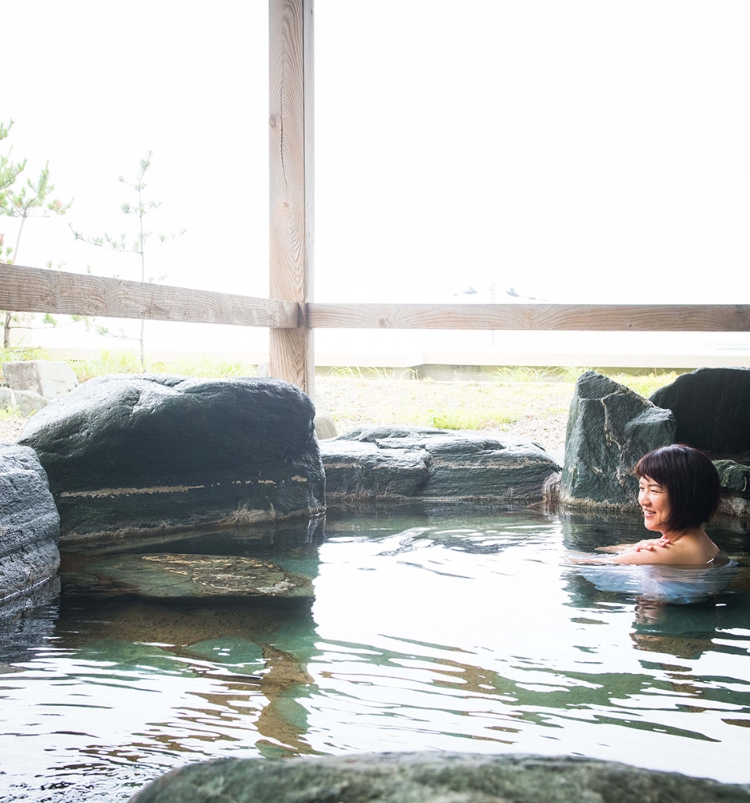
Hot springs
Surrounded with active and inactive volcanoes, Tsuruoka City is a haven for hot springs.There are 4 main hot spring towns in Tsuruoka: Yunohama Onsen, Atsumi Onsen, Yura Onsen, and Yutagawa Onsen.
Yunohama Onsen boasts a history of 1,000 years and is situated along the coast of the Sea of Japan, with numerous traditional inns, including luxury ryokan such as Kameya, an establishment who had the honor to host two Imperial couples in its history. "Atsumi Onsen," along the Atsumi-river near the coast, with a history of 1,200 years, offers a peaceful view on the hundreds of cherry trees that bloom in late April, and dress guests in yukata (“summer kimono”) attire. "Yutagawa Onsen," which has been welcoming visitors for 1,300 years in its many small traditional inns, is a tranquil hot spring village at the foot of a sacred mountain: Mt. Kinbo, surrounded by bamboo groves and plum blossoms. Finally, "Yura Onsen" provides breathtaking views of Hakusanjima’s islet and the setting sun over the Sea of Japan.
Tsuruoka City's hot springs offer a variety of experiences, from daytime bathing to overnight stays, each with its unique history and natural beauty, making it a true hot spring paradise for visitors seeking relaxation and rejuvenation.
